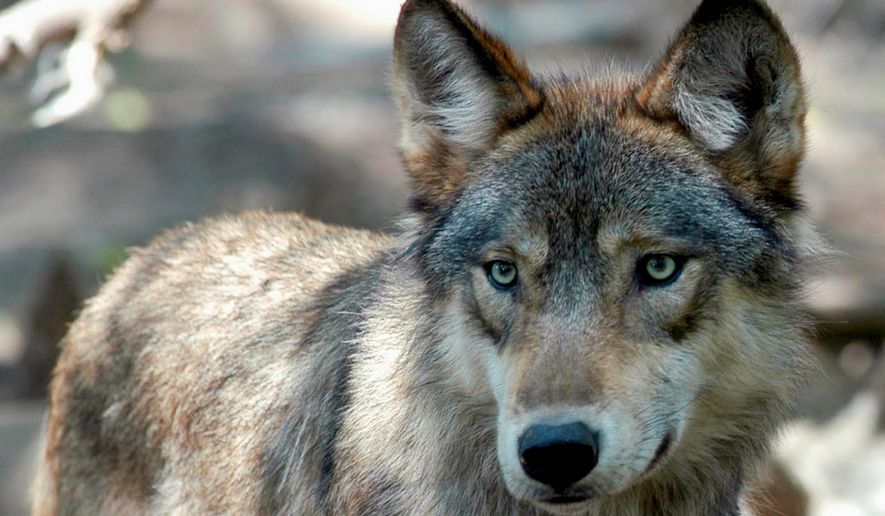Gray wolf has thrived since reintroduction in 1995

By Valerie Richardson– The Washington Times
DENVER — Trying to remove the gray wolf from the endangered species list has been like prying a pack of the predators off a fat elk carcass: messy, more than a little risky and with no guarantee of success.
With gray wolves thriving since their 1995 reintroduction, a dogfight is looming as the Fish and Wildlife Service and House lawmakers ramp up their efforts to delist the animals, setting up another battle over the Endangered Species Act with environmentalists.
Reps. Collin C. Peterson, Minnesota Democrat, and Rob Bishop, Utah Republican, jumped back into the fray last week with legislation to end the gray wolf’s endangered species status in the Lower 48.
“Gray wolf populations have reached sustainable levels, and it is well past time to return authority over their management to the states,” Mr. Peterson said in a statement. “This bipartisan legislation will allow states to protect the livelihood of their livestock owners and preserve a healthy balance of wild animal populations.”
The bill would accomplish via legislation what the Fish and Wildlife Service has been trying to do for years as the apex predator’s numbers have soared to an estimated 6,000, only to be thwarted by the courts after lawsuits from wildlife groups.
The agency is expected to release in the next few months its final rule declaring the gray wolf recovered in the Lower 48 and removing its Endangered Species Act protections. Environmental groups have vowed to file a legal challenge as soon as the rule is issued.
The Center for Biological Diversity called the proposed rule when it was introduced a year ago “a death sentence for gray wolves across the country.”
Collette Adkins, the center’s carnivore conservation director, said the delisting is premature given that the wolf has bounced back in some regions but not across its historic range.
“What the Fish and Wildlife Service has done for over a decade has been to try to prematurely remove protections from wolves, saying, ‘Oh, if we just have them in a few spots, that’s good enough,’” Ms. Adkins said. “But the Endangered Species Act requires more.”
Wildlife groups like hers “want to make sure that the Endangered Species Act continues to be this powerful tool to protect valuable wildlife, so we can’t let the Fish and Wildlife Service get away with just having recovery in a couple of areas and saying, ‘That’s good enough,’” she said.
Source: https://www.washingtontimes.com/news/2020/mar/2/gray-wolf-delisting-endangered-species-sparks-dogf/
